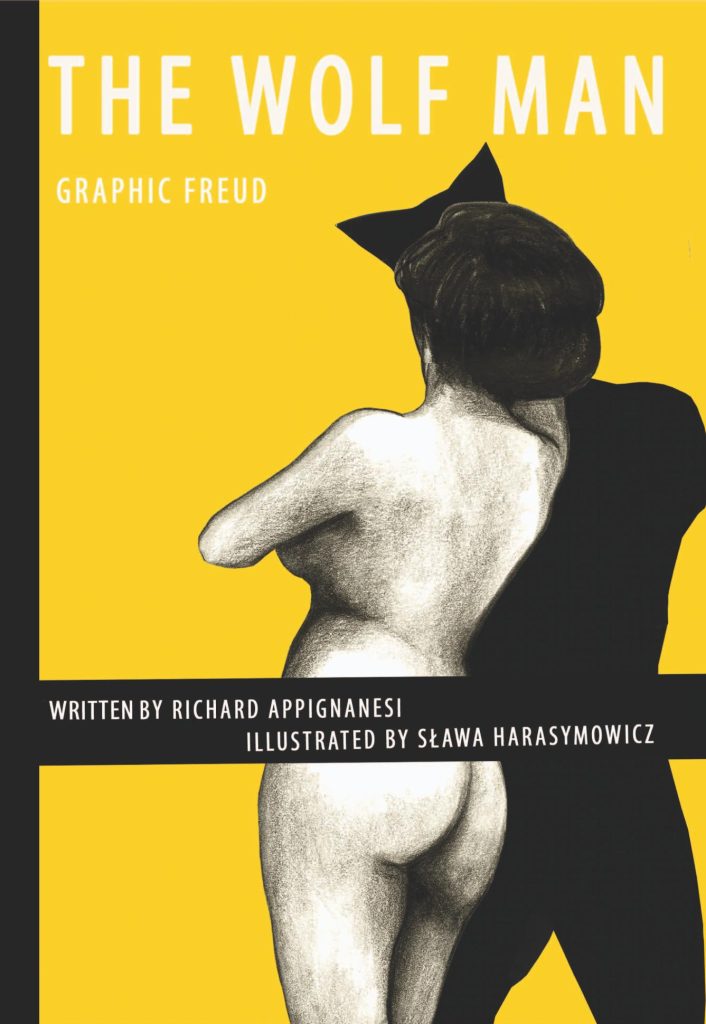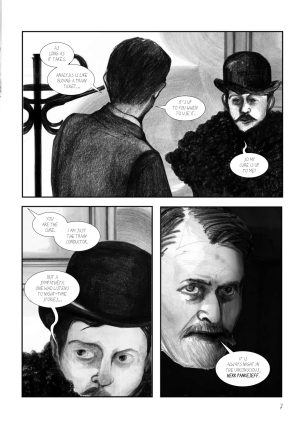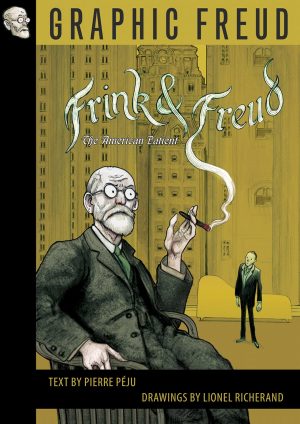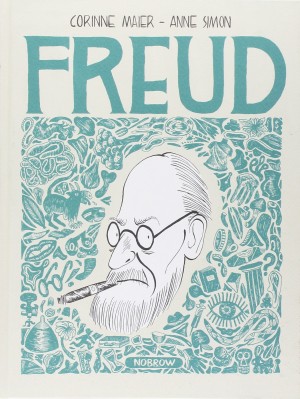Review by Frank Plowright
The Wolfman is the first of a graphic novel series looking at the life of pioneering psychiatric analyst Sigmund Freud. It’s an ambitious project for not taking the obvious method of a straight biographical run through his life and career, and is a long-term commitment, with just three graphic novels in print by 2020.
This first outing focusses on the single case of Sergei Pankejeff, a Russian who first consulted Freud in 1910, by which point Freud was 54, and his theories of psychoanalysis were gaining respectability and followers. At 23 Pankajeff was immensely wealthy and came to Freud after consulting Emil Kraepelin, who believed mental illness had a physical cause. Depression runs in the family lineage, and Freud begins by exhuming Pankejeff’s childhood, in which the Wolf Man title originates. When very young he had a vivid dream of seven wolves sitting motionless in a tree outside his window watching him.
Richard Appignanesi, who’ll also write the following Hysteria, is methodical, distilling Freud’s listening and commentary to an easily followed essence. Given the complexity of psychoanalysis this is no simple task. However, for all the good work supplied by Appignanesi The Wolf Man never achieves its potential due to the way Sława Harasymowicz interprets the script. She transmits the intensity of the psychoanalysis sessions via repeated extreme close-ups. They’re good portraits faithful to the mood, but make for dull pages. The fine art perspective transmits more elegantly on an occasional symbolic panel or the use of silhouette.
Pankejeff is a bundle of repressed sexual urgings formulated at a young age, then suppressed by subsequent indoctrination of Catholicism. The way Freud coaxes out the intricacies of his past reveals a fascinating story even discounting the psychological aspects, and someone who’s interesting for not being a paragon of virtue struggling with ill health, but a man with some problematical attitudes. It also displays the opportunities provided by immense wealth in the years leading to World War I.
To the casual reader some of Freud’s leaps through dream analysis may seem fanciful, and indeed later in life Pankejeff was critical of some conclusions reached, but that doesn’t detract from the reading experience. The result is akin to a detective mystery lasting four years as we struggle alongside Freud to understand the origin of Pankejeff’s problems.
The sessions end naturally at the onset of World War I, and via memoirs Appignanesi follows Pankejeff’s life through tumultuous upheavals in Europe, and back into therapy, now a very different man on the outside. He’s followed to a new therapist, and some extraordinary revelations mean he remains fascinating to the end. If only his story could have been drawn with greater application of comic storytelling skills. Hysteria is next in the series.





